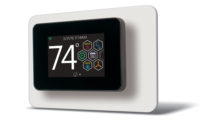Capitalizing On Improvements
Established in 1993 with the merger of three area hospitals, the not-for-profit health care system comprises 19 owned, managed, leased, or networked local care providers.The system includes 15 hospitals with 3,354 licensed beds, 400 physicians practicing in more than 50 Iowa communities, and a joint-venture partnership with a physician services organization.
IHS's ambitions for its facilities management information system (FMIS) were as ambitious as the realm of services it provides. Goals included improved managed care capabilities; the acquisition of accurate information and decision-support tools for clinicians and administrators; and improved ambulatory and outpatient capabilities.
The FMIS plan took months of strategic planning, teamwork, and engineering. It involved a focused, collaborative effort by IHS engineers, personnel from the information systems (IS) department, facilities management, and Siemens Building Technologies, Inc. (New York), which provided the Apogee(tm) building automation system (bas).
"For nearly a year," says T.B. Craici, IHS plant engineer, "we transformed our previous building control system into a highly advanced, PC-based facility management system. This meant integrating all of our critical systems, such as hvac, fire alarm, security-access, electrical distribution and circuit protection, and lighting."
The FMIS is programmed to provide trending and historical reports of building system usage. This allows Craici to evaluate power demands and facility use patterns, as well as verify accuracy of utility bills.
It also offers another advantage: helping provide solid evidence to justify capital equipment needs.
Furthermore, a remote digital paging system and a network of more than 3 miles of fiberoptic cable enable engineers to check or troubleshoot any facility system from any of nine terminals, or from anywhere with a telephone and laptop computer.
Saving Lives (And Money)
With the new FMIS in place, IHS has successfully integrated the management of its facilities into its information systems across multiple campuses. The key, according to IHS executive vice president Jim Skogsbergh, was the technology migration plan supporting the organization's overall IS vision."As we continue with our initiative of integrating our IS functions," he says, "we have made major strides towards our goal of consistency and quality of information. Each core information system - FMIS, finance, home care, and call center, for example - becomes a key component of the overall plan."
In particular, the FMIS project saw IHS achieve a number of operational objectives. Improvements were implemented without disruption to existing operational efficiencies; the efficiency of system operators was increased; overall system maintenance costs were reduced; and, as IHS grows and changes to meet future health care needs, its investment in technology is protected by allowing for easier, more cost-effective system expansion.
From a health care facility engineer's perspective, Craici notes, "It's an information marvel.
"We've reduced our personnel needs to only one person for evening and night shifts, yet we can better serve the needs of any of our 16 buildings and 1.3 million sq ft across the state. I know exactly what's going on anytime, day or night, with any building system.
"That's the real value of facility management information in my business."ES







